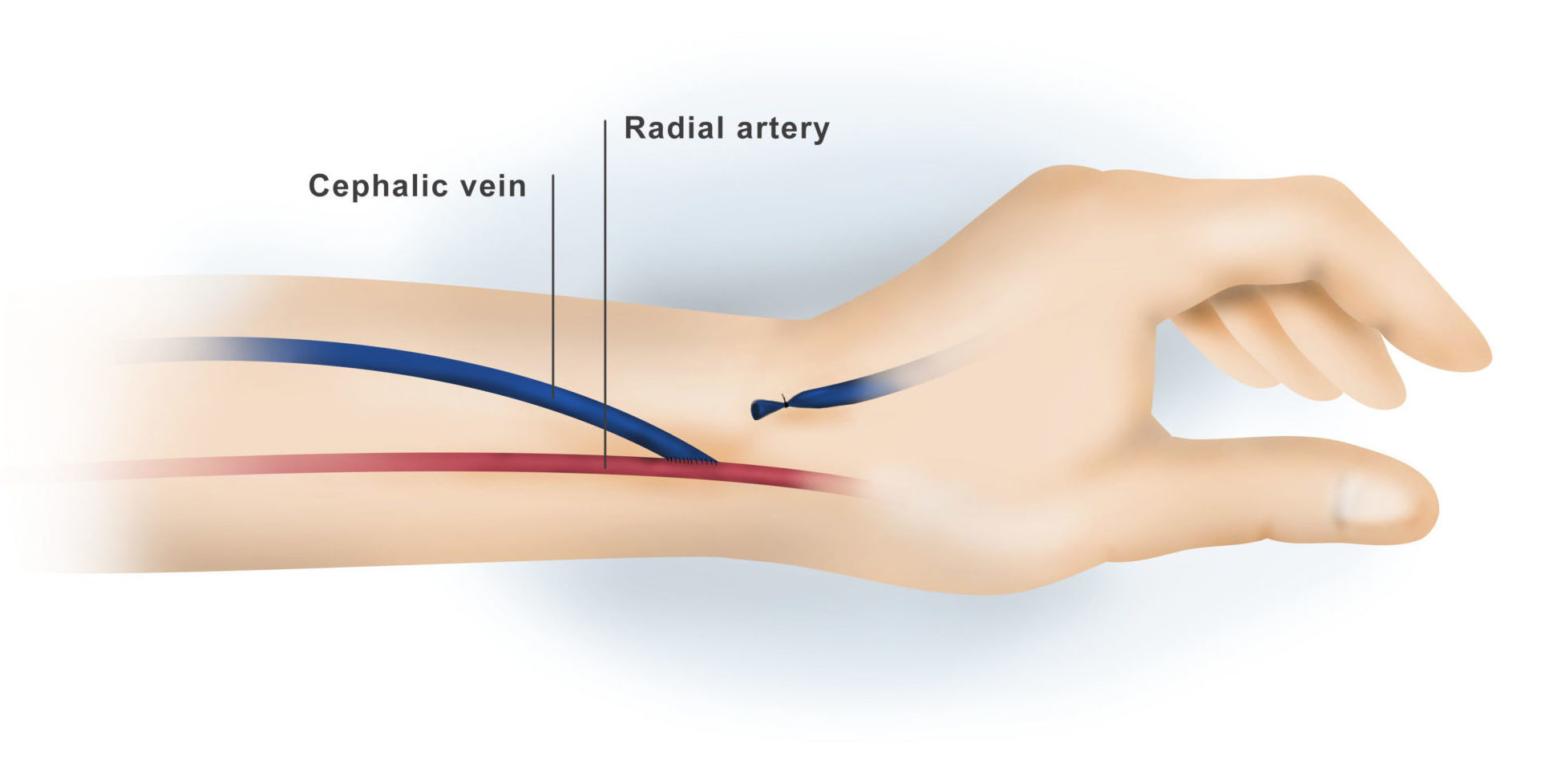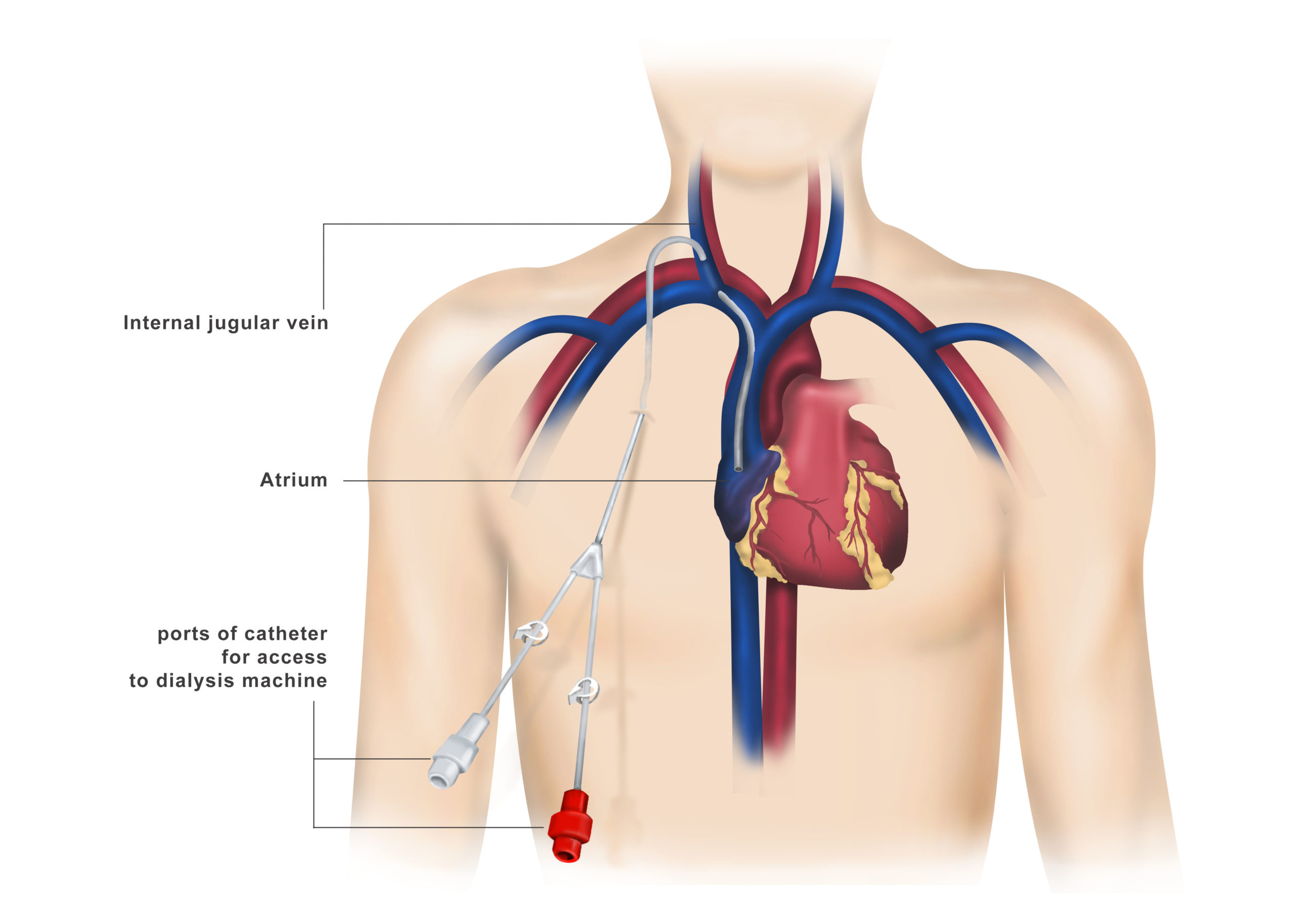Renal Failure
When the kidneys can no longer clean the blood, dialysis may be needed. The most common form of dialysis is called hemodialysis. In hemodialysis, blood from an artery in your arm flows through a thin plastic tube to a machine called a dialyzer. The dialyzer filters the blood, working like an artificial kidney, to remove the extra fluids and waste from the blood. The cleaned blood then flows out of the machine through another tube placed into a nearby vein in the same arm. Most people have 3 dialysis sessions every week. Each session lasts about 3 or 4 hours.
Dialysis
Before you can begin hemodialysis, there needs to be a way to remove the blood from the body (a few ounces at a time) and then return it. Your arteries and veins are usually too small, so surgery is done to create a vascular access site. Or alternatively peritoneal dialysis can be used where fluid is exchanged in you r peritoneal cavity to remove waste products through a peritoneal dialysis catheter.
For Peritoneal Dialysis
- Peritoneal dialysis catheter
- Benefits are of Home Dialysis
- A PD catheter is a flexible tube placed in your abdomen with a small piece of tubing left outside of the body.
- Healing time after surgery: A few days to 2 weeks, depending on the urgency to start treatment. A PD catheter can also be placed in advance for a quick start when ready.
- A PD catheter is the only access type for peritoneal dialysis.
- It requires no needles during dialysis.
- You must have a clean treatment environment to avoid infection.

For Hemodialysis
- Arteriovenous (AV) fistula
- Arteriovenous fistula
- An AV fistula is an access site formed by the joining of a vein and an artery in your arm.
- Healing time after surgery: 6-8 weeks to mature
- An AV fistula is the best choice for hemodialysis access if you’re eligible.
- It’s the most natural access site since it’s formed from your own blood vessels.
- A fistula has the lowest chance of infection and clotting.

Graft
- A graft is an access site formed by a piece of soft tubing that connects a vein and artery in your arm.
- Healing time after surgery: 2-3 weeks
- A graft is a great alternative if your veins are too small or weak for a fistula.
- It offers better blood flow and has a lower risk of infection than an HD catheter.
- A graft may be replaceable with a fistula if veins get stronger or bigger after being on dialysis.
Hemodialysis catheter
- An HD catheter is a tube placed in your neck,chest or groin.
- A hemodialysis catheter is often used temporarily until a permanent graft or fistula is ready for use.
- It has a higher risk of infection and clotting due to the catheter tip’s location being near the heart.
- A hemodialysis catheter must be kept dry.


